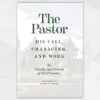Book Review: Planting Missional Churches, by Ed Stetzer and Daniel Im
Ed Stetzer and Daniel Im, Planting Missional Churches: Your Guide to Starting Churches that Multiply. 2nd ed. B&H Academic, 2016. 416 pages.
When I searched “church planting” on amazon.com 1,747 books came up. That’s a lot of books on church planting! At the top of that list was the second edition of Ed Stetzer and Daniel Im’s book Planting Missional Churches. This book has become one of the go-tos in the land of church planting.
Ed Stetzer has lived, breathed, and studied church planting for some time now. He has planted numerous churches in different contexts as well as having advised and worked for various church planting entities. Along with Im, he shows a clear grasp and passion for planting churches which comes out on every page.
In addition to pulling in Daniel Im’s experience as a church planter, this new edition has added new material and has also sharpened some of the points Stetzer made in the first edition.
The book is broken up into five sections: Foundations of Church Planting, Models of Church Planting, Systems for Church Planting, Ministry Areas for Church Planting, and Multiplication and Movements.
Under each section there are more specific chapters about various topics relating to those big sections. So much so, that by the end of the book you will have walked through most every conceivable facet of each topic, from what makes a church plant to leadership models all the way down to finding a meeting place and handling finances. Along with Stetzer’s experience, the quantity of material is one of the reasons the book comes so highly recommended.
As the title suggests, the word “missional” characterizes everything the authors write about. They define “missional” as “adopting the posture of a missionary, joining Jesus on mission, learning and adapting to the culture around you while remaining biblically sound” (1). So, the idea of the book is to begin churches that have this posture throughout each aspect of a church plant.
WHAT’S HELPFUL?
Planting Missional Churches has a great deal to commend it. The authors are at their best when they are speaking about “the Mission.” From the way they ground church planting in the Great Commission to their surveying the ministry of Paul throughout the Scriptures we are led to see that church planting is part of the very fabric of the New Testament.
Also, when it comes to the practicalities of the Mission in church planting they bring all of their knowledge to bear on spreading the gospel as generously as possible to get the largest hearing as possible for the Gospel.
For example, Stetzer and Im instructively highlight the need for both gospel proclamation and gospel demonstration. They reveal the Biblical pattern and then give examples of what it would look like to properly facilitate both. Noting things as simple as moving your bank account to your community or getting acquainted with clerks or service people, the authors highlight the need to move against the culture’s non-personal ethos and into being a blessing to those around us in view of sharing the gospel (251).
The chapter on small groups also proved to be insightful when considering how best to use those ministries for the sake of mission. They advocate the “three-minute rule,” a rule which encourages members to identify new people within three minutes after the service before talking to others. They also encourage members to invite visitors into their homes or small groups. Also, the instruction to gather groups in strategic areas was helpful as I consider how best to engage our own community. It is easy to either let these groups pop up where ever someone is willing or let them become clique’s and the instructions in this chapter helpfully address each of those issues.
WHAT SHOULD I BE CONCERNED ABOUT?
In some sense, this book is less about planting churches as it is about being missional in the work of planting churches.
Whats the difference?
In a book on church planting, you would expect to find a definition on what a church is at the beginning, in a prominent place. Yet I failed to see anything like this until page 98 where it was embedded in the conclusion of a chapter on simple churches. Everything else was on the need to plant churches and how effective church planting is at reaching the lost. All very good, but the book fails to make clear how one can know a church is planted since defining “church” is often more assumed than explicitly articulated.
Related to this, Stetzer and Im often overemphasize numbers and business practices. Along with the acceptance of business words like “launch,” “entrepreneur,” and “customer to owner,” they take a positive view of “focus groups.” Like a business would do, they advocate targeting a particular subset of people and contextualizing ministries so as to garner their acceptance into the community. Of course, every church contextualizes at some level. Yet the authors seem to double down on this idea in hopes of getting more people, more quickly as opposed to being willing to lose numbers for the sake of taking in multi-ethnic, multi-generational, multi-cultural, or diverse socio-economic groups.
With a church growth undercurrent, a careful reader will find themselves wondering about other things like membership, discipline, and shepherding—critical ministries of a church that get very little attention if any at all.
HELPFUL BUT A BIT INCOMPLETE
Toward the end of the book, Stetzer and Im say that they hope this book is more than a “tool kit for starting churches” (355). But I think it would serve the reader to know that being a “tool kit” for church planting is what the book does best. Stetzer and Im have produced a useful book on planting, but you’ll need other books to fill out your understanding of what the church is and the responsibilities of pastoral ministry.
In other words, after having formed your understanding of the church and pastoral ministry then come and utilize this valuable resource to tremendous benefit.








